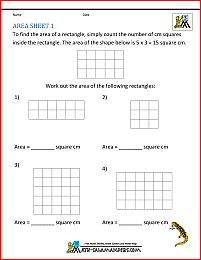L x W = AREA
As promised in my last post (for all my loyal readers), I'm going to build off of last weeks topic and move on to......AREA!
Area is a 3rd grade standard, but as you guys (maybe) saw in my last post, students get a chance to explore the basics of area in 2nd grade! In 2nd grade, they begin partitioning rectangles into same-size boxes. As I've seen in many classrooms, area is taught first by showing students that you can count the boxes inside the shape to determine how the area, AKA how many boxes there are. As students solidify their conceptual understanding of what area represents, they begin to see shapes with labeled sides. Students learn to understand that the length and width is the same on opposite sides, and practice partitioning the shapes themselves and finding the area. Finally, students are given labeled sides and learn that they can multiply in order to find the area (AREA = LENGTH x WIDTH). There are many different activities that can help students deepen their understanding of this concept, from worksheets that have students draw the boxes to worksheets that give labeled sides and have students find the area to worksheets that give the area and one side, asking students to determine the length of the other side.
TEACHER TIP: Have students work with graph paper as they are learning about area. Using the graph paper, tell your students that they length is x number of boxes and the width is y number of boxes. Have them outline the box and use the formula to determine the area. The graph paper serves as a scaffold for students who may still need a visual and can count boxes to familiarize themselves further with area before doing it on blank paper!



Area is a 3rd grade standard, but as you guys (maybe) saw in my last post, students get a chance to explore the basics of area in 2nd grade! In 2nd grade, they begin partitioning rectangles into same-size boxes. As I've seen in many classrooms, area is taught first by showing students that you can count the boxes inside the shape to determine how the area, AKA how many boxes there are. As students solidify their conceptual understanding of what area represents, they begin to see shapes with labeled sides. Students learn to understand that the length and width is the same on opposite sides, and practice partitioning the shapes themselves and finding the area. Finally, students are given labeled sides and learn that they can multiply in order to find the area (AREA = LENGTH x WIDTH). There are many different activities that can help students deepen their understanding of this concept, from worksheets that have students draw the boxes to worksheets that give labeled sides and have students find the area to worksheets that give the area and one side, asking students to determine the length of the other side.
TEACHER TIP: Have students work with graph paper as they are learning about area. Using the graph paper, tell your students that they length is x number of boxes and the width is y number of boxes. Have them outline the box and use the formula to determine the area. The graph paper serves as a scaffold for students who may still need a visual and can count boxes to familiarize themselves further with area before doing it on blank paper!



I really like the teacher tip about using graph paper to learn about area, I think that this makes it much more visually appealing and easier to understand. This is a great way to scaffold the task, so students can start by counting the boxes and then progress from there. I wonder if there is an acronym that students can easily remember A=L x W.
ReplyDelete